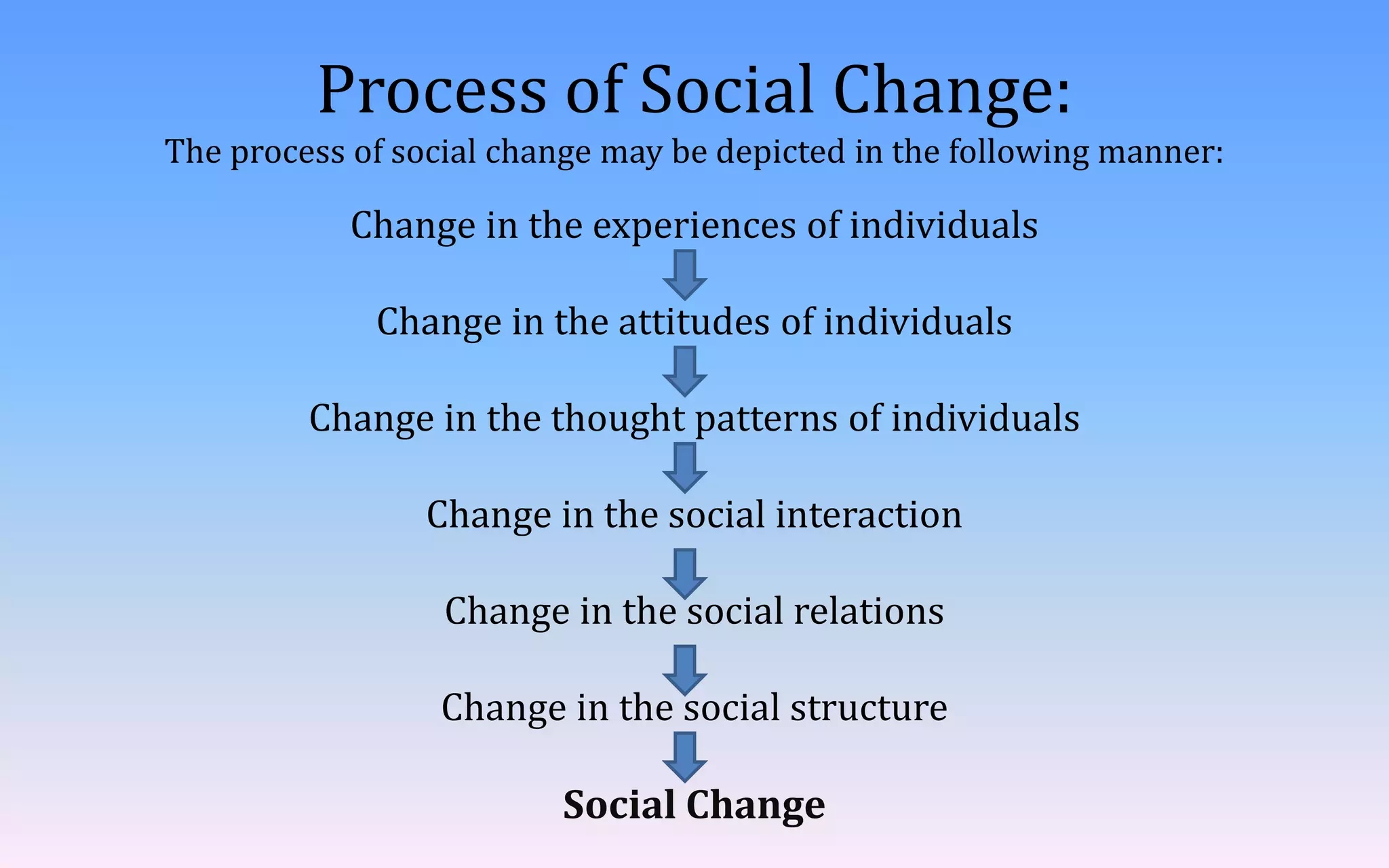Social changes occur in all aspects of society, including social structures, roles, relationships, and norms. Changes can be slow or rapid. Social change refers to modifications in these social aspects. It is caused by various internal and external forces and factors like education, industrialization, urbanization, legislation, and modernization. Some key factors that affect social change in India include geographical conditions, technological advancements, cultural shifts, ideological changes, and the push for westernization and development. Social change is a continuous, universal process that impacts social institutions, behaviors, and the overall functioning of society over time.















